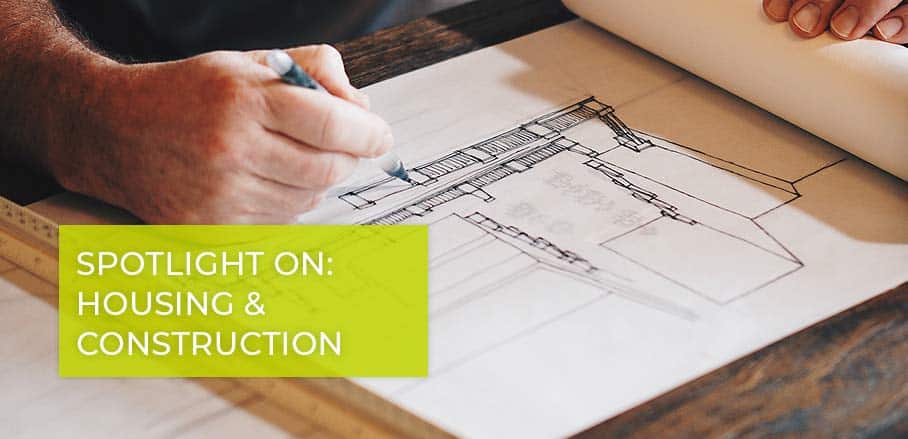Liveable Cities Need Sustainable Solutions
Climate change poses new and specific challenges to the way we think about building. Christine Lemaitre from the German Sustainable Building Council (DGNB) calls out to architects, planners, and builders to respond to this challenge instead of waiting for the entailing problems to solve themselves.
The Need to Rethink
Life in cities worldwide has changed radically in the last decades. This development will become even more pronounced in the future and is of particular importance against the background of global challenges such as climate change and scarcity of resources. In order for our cities to remain liveable or even to become worth living, a fundamental rethinking of urban planning issues is needed – from a traditional mindset to a more forward-thinking, connected, responsible, and sustainable way of planning.
Such rethinking has to be understood as a requirement for the planning and construction of cities, where quarters and buildings are undergoing enormous change. It is about nothing less than future viability – for humans and the environment alike. This can be achieved by giving due consideration to the principles of sustainable building and by putting them into practice rather than just talking about them.
It is not about finding the perfect answer to all questions. Rather, it is about paying attention to a few key building blocks as well as thinking, planning, and implementing beyond well-established patterns and structures.
Humans should be at the centre of planning. In other words, we need places where people can be healthy. Where they can move freely. Where social interaction works. Where there are public offers that are actually used. In short: we need places where people like to stay – even in times of climate change, even in the face of increasingly extreme climatic conditions.
Changed Requirements in Times of Climate Change
Climate change is one of the reasons why districts and buildings in today’s cities need to be increasingly resilient and adaptable to new conditions. At the same time, limited space in cities must be used more efficiently. Long-term planning is important since we cannot afford to start all over again in a few years and rebuild everything. Climate change is not waiting for us to find solutions, and our natural resources are finite.
In general, the use of our resources is a decisive factor in sustainable building, whether at the district or building level. It is about the right choice of materials. In terms of sustainability, “right” means, among other things, free of pollutants, suitable for the cultural and climatic conditions, reusable. The preventive avoidance of waste – also with regards to ensuing dismantling – is important.
But that does not go far enough for us at the German Sustainable Building Council (DGNB). We are committed to promoting solutions that follow the idea of a circular economy. These are innovative business models that contribute to the recycling of materials while ensuring their high quality. For example, the DGNB certification awards bonus points for a significant reuse of building components or for building usage concepts that allow for a high-intensity use of an area.
In addition, networking plays an increasingly important role in sustainable urban development. This includes aspects of energy supply, recycling management, as well as mobility in the city of the future, which must be planned and implemented in networks. It is about implementing smart infrastructure as well as examining the services that are already offered at the location. This means for example that opening a fifth bakery is uncalled when there are no medical services available in the neighbourhood.
Planning as the Key, Certification as a Tool
A crucial step on the way to sustainable buildings and districts is integral planning. Only if builders, architects, planners and, ideally, users agree on the most important cornerstones in terms of sustainability at an early stage, potential can be fully exploited and enormous follow-up costs can be avoided for subsequent improvements.
The principle of certification can be of significant help here because it uses concrete criteria to identify the topics that can be used to individually improve the sustainability quality of the project. As a shared basis for knowledge and decision-making, it supports process management, making it transparent and its achievements comprehensible. Thereby, certification is not just a tool that sets standards to make projects comparable. It sets targeted incentives to exceed the statutory minimum requirements and to invest in the quality of the project – for risk identification, long-term value preservation, and, thus, investment security.
A holistic, life-cycle and performance-oriented approach is decisive in the sustainability certification offered by the DGNB. Criteria must be taken into account that are equally ecologically, economically, and socio-culturally relevant. There are also technical, procedural, and location-related aspects. Criteria range from the avoidance of risk and pollutants, indoor air quality, and bar-free access to mobility infrastructure.
For planning and evaluation, a comprehensive project lifecycle – 50 years for buildings– is always used as the basis for certification. This allows to honestly state the real environmental impacts and costs. In addition, it is aimed at improving the individual projects. This is only possible if one has a goal in mind from the very beginning and makes use of previous achievements. To achieve their goals, builders and city planners signing up their project to the DGNB certification are supported by trained auditors who have vast experience in increasing sustainability.
A Call to Action
Wherever in the world architects, planners, and builders are concerned with the questions of sustainable urban development, goals can only be achieved if one deals actively and openly with the individual possibilities of a project’s regulatory, climatic, and financial scope. Here, it is also important to use the existing tools like the DGNB certification as an aid. We need to become active, as the most counterproductive thing you can do in sustainable construction is not to start with it.
- Liveable Cities Need Sustainable Solutions - 4. September 2018
